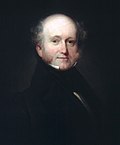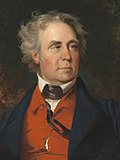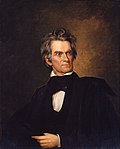| 1844 presidential election | |
  Nominees Polk and Dallas | |
| Convention | |
|---|---|
| Date(s) | May 27–30, 1844 |
| City | Baltimore, Maryland |
| Venue | Odd Fellows Hall |
| Candidates | |
| Presidential nominee | James K. Polk of Tennessee |
| Vice-presidential nominee | George M. Dallas of Pennsylvania |
The 1844 Democratic National Convention was a presidential nominating convention held in Baltimore, Maryland from May 27 through 30. The convention nominated former Governor James K. Polk of Tennessee for president and former Senator George M. Dallas of Pennsylvania for vice president. The convention included three former vice presidents who sought the presidential nomination, John C. Calhoun, Van Buren and Richard Mentor Johnson.
Contents
- Proceedings
- Presidential nomination
- Presidential candidates
- Vice presidential nomination
- Vice presidential candidates
- Declined
- In popular culture
- See also
- References
- External links
Though his opposition to the annexation of Texas cost him support with expansionists and Southerners, former President Martin Van Buren entered the convention with the backing of a majority of the delegates. Before presidential balloting commenced, the convention voted to reinstate a rule requiring the presidential nominee to win two-thirds of the vote. On the first presidential ballot, Van Buren won a majority, but fell short of a two-thirds requirement. As the balloting continued, Van Buren continually lost support to Johnson, former Governor Lewis Cass of Michigan, and Senator James Buchanan of Pennsylvania.
Though he had entered the convention hoping to be nominated for vice president, Polk had the strong support of former President Andrew Jackson and was acceptable to the different factions of the party. He won the nomination on the ninth presidential ballot, thus becoming the first dark horse candidate to win a major party's presidential nomination. After Senator Silas Wright of New York declined the vice presidential nomination, the convention selected Dallas as Polk's running mate. The Democratic ticket went on to win the 1844 presidential election.


























